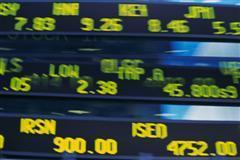| Home | About | Archives | RSS Feed |

The Independent Investor: Understanding the Foreclosure Scandal
 This week one of my clients asked me to explain the ongoing foreclosure debacle in "plain English" as she put it. It dawned on me that there may be a lot of readers out there who would benefit from the same thing, so here goes.
This week one of my clients asked me to explain the ongoing foreclosure debacle in "plain English" as she put it. It dawned on me that there may be a lot of readers out there who would benefit from the same thing, so here goes.
The first point to understand is that homeowners can only be foreclosed and evicted by the person or institution that actually holds the mortgage loan note. That noteholder is the only entity that has the legal authority to ask the courts to foreclose and evict the mortgageholder. That note is what you sign and give to the original lender, promising to pay the loan back over 10-20-30 years. It is that note (not the mortgage) that is the important legal document.
Back in the day, before mortgage-backed securities and loan securitization, most mortgage loans were issued by your local S&L or bank. The note stayed with the local financial institution who serviced the loan, just like in the movie "It's a Wonderful Life."
Then some Wall Street rocket scientists decided to modernize that business. Since all mortgageholders are not the same and some are riskier than others, these Gordon Gekko-lookalikes decided there was a buck to be made in wholesaling mortgage loans to investors hungry for higher-yield securities. Wall Street bought these mortgage loans off the banks and bundled them into huge pools called Real Estate Mortgage Investment Conduits (REMICs). At that point, these mortgages were spliced and diced into tranches according to their risk, (among other variables). The REMICS never owned the mortgage notes, but were simply re-packaging the mortgage loans, taking a fee and selling them to others.
Investors bought these loans, which were separated into a whole range of tranches according to how much risk the investor wanted to take on. What is important to understand is that each tranche holder owned a portion of the same mortgage, rather than investor A owning my mortgage and investor B holding yours. If my mortgage defaulted and you owned a junior (riskier) tranche of my mortgage (times many, many more) then you would be hit with that loss first. If there was still some loss left over, the more senior (safer) tranche holder would take a hit as well. It was physically impossible, even if the sellers owned the notes, to divide them fractionally between thousands if not millions of buyers. So once again these mortgages (tranches) were sold but not the notes.
Imagine the complexity of keeping track of what mortgages were defaulting versus those that were not and how much loss to assign each individual trancheholder? Enter the Mortgage Electronic Registration System (MERS), which became the repository for millions of digitized mortgage notes that all the financial institutions originated from the actual mortgage loans signed by you and me. These digitalized mortgage notes were sliced and diced and rearranged once again and came out the other end as mortgage-backed securities. The problem was that MERS didn't actually hold the mortgage notes either. And therein lies the rub. Legally, the chain of title for these mortgage loans has been broken a couple of times.
As I've explained, the key document in taking out a mortgage is the note. In order for that note to be sold or transferred to someone else (for example, transformed into a mortgage-backed security), the note has to be physically endorsed over to the next person. If it isn't, the chain of title is broken. If the chain is broken than legally the mortgage note is no longer valid. The person who took out the mortgage no longer owes the loan, because he no longer knows who to pay. In my opinion, I still believe that everyone has an obligation to repay money they have borrowed, otherwise, the entire system of credit will disintegrate.
Of course, with the number of foreclosures that have hit the nation, this issue was bound to be discovered as homeowners began to contest eviction. The banks, realizing their error, hired foreclosure mills, (legal firms that specialized in foreclosures), to remedy the problem. Accusations that these foreclosure mills actually went back and falsified documents in order to repair the broken chain of titles caught the attention of attorneys-general throughout the nation as did stories of robo-signers who were signing their names to foreclosure documents that attested that they had reviewed the loan documents when they hadn't.
In an election year, this issue has disrupted everything to do with the mortgage markets from foreclosure to new home sales. Everyone from the White House, the Justice Department, the U.S. Treasury and the Housing Departments are announcing task forces to dig deeply into this mess. In my opinion, the digger they deep the worse the true story will become so stay tuned.
| Tags: mortgages, foreclosures, crisis |
@theMarket: QE II Supports the Markets
 No, QE II is not the name of a cruise ship; although it might as well be, given the upward ride it is providing the stock market. The Federal Reserve is expected to launch another quantitative stimulus effort in early November and the markets are rising in anticipation of that event.
No, QE II is not the name of a cruise ship; although it might as well be, given the upward ride it is providing the stock market. The Federal Reserve is expected to launch another quantitative stimulus effort in early November and the markets are rising in anticipation of that event.
On Friday, Fed Chairman Ben Bernanke reiterated that the central bank is ready to move if necessary to stimulate the economy. Investors are assuming it's a question of "when" and not "if" the Fed will move to buy additional U.S. Treasury bonds, mortgage-backed securities and whatever else they decide will provide additional impetus to a slow-growth economy.
In an election year, where the continuing high rate of unemployment and the ongoing housing mess is being blamed on the Democrats, the pressure on the Fed for a QE II must be enormous. Remember, at the end of the day, Bernanke is a political appointee, as are the members of the Fed's governing board. Sure, we would like to think that the Fed is an independent body focused solely on the economic health of America and it is most of the time.
On the other hand, if the president's wishes dovetail with what the Fed perceives to be necessary in helping the economy so much the better.
In my last few market columns, I explained that QE II was a game changer. The Fed, by promising additional stimulus, is providing investors with a "put" on the economy and therefore on the stock market. If the economy continues to grow on its own, the markets will go higher. If the economy falters, the Fed will intervene to fix it and the markets will go higher. What's not to like about that?
The arguments on whether we really do need another stimulus, will QE II really work, and will it add to the potential for more inflation down the road are consuming a forest of newsprint. In the meantime, investors are dumping the dollar (see my latest column "The Coming Currency Wars"), the markets forge steadily higher and commodities of all kinds are on fire.
As readers recall, only a month ago I raised my price target for gold to $1,350 per ounce. We have already surpassed that level and it looks like the yellow metal will hit $1,400 per ounce very soon. I'm going to have to raise my price target again but first I would like to see gold and other commodities pull back.
The dollar is key to any commodity correction. There is an inverse relationship between the dollar and commodities. The dollar may bounce over the next few weeks and if it does, that should cause commodities in general to pull back. Remember too that in the commodity arena, corrections are extremely sharp where prices can drop dramatically in a very short time.
As the S&P 500 Index flirts with the 1,180 level, I would expect a bit of resistance before the bulls make a dash toward the year's highs. The ongoing questions over housing foreclosures that have embroiled most of the banking sector this week has kept a lid on the averages. The next Fed meeting won't be until early November so any potential QEII is still weeks away. The main market moving catalyst we face is this quarter's earnings announcements. So far, company results have been a mixed bag. My advice is to let the markets pull back a bit before committing any more money to this party.
| Tags: Federal Reserve, Bernanke, stimulus |
The Independent Investor: The Coming Currency War
 |
The International Monetary Fund and its members were in no mood to agree on a unified policy of currency movements at their weekend meeting in Toronto. Finger pointing and veiled threats of retaliation were hurled at China from both American and European members, among others. Underneath all the rhetoric, I fear we are in a race to the bottom as countries vie to reduce the value of their own currencies while demanding that others strengthen theirs.
Back in early 2009, in several columns, I speculated that just about every country in the world would try to export their way out of recession. In order to do that, each country would endeavor to keep their currency as cheap as they could, thereby reducing the prices of their exports. It’s also a fact that some countries (Brazil, India, China) weathered the world recession far better than others. Critics argue that part of the reason that occurred was that these countries contrived to keep their currencies artificially low and continued to export as much as they could.
Unfortunately, today the world still grabbles with high unemployment and an economic recovery that is anemic at best. As deficits mount and governments scramble to increase the pace of growth, each country is vying to take an increasing share of a shrinking global economic pie. It is the real cause of this war of words which could soon take on a much more concrete form of expression.
China, due to its size and economic prowess, has been singled out as the main culprit in this on-going currency manipulation. Over the weekend, the Chinese resisted demands to strengthen their currency. They argued that they were already beginning to do so, but “gradually”. They warned that if their currency, the yuan, did not remain stable, it would bring disaster to China and the world.
This was seen by the United States as just more stonewalling. Unfortunately, lawmakers are meeting this week to consider punitive measures against China for undervaluing their currency. Called the “Currency Reform for Fair Trade Act," the legislation is intended to make it harder for the Commerce Department to ignore taking retaliatory actions against Chinese exports that are judged to be benefiting from a weak currency. The passage of such a bill could easily ignite a trade war where we levy duties or outright ban Chinese import A, while China retaliates by doing the same to U.S. import B.
To date, the White House has been able to short circuit any Commerce Department recommendations for any trade embargos that Congress has demanded. People such as U.S. Treasurer Tim Geithner have chosen a less strident approach in convincing other nations to compromise on the currency question. But if this bill passes the landscape could change quickly. It is just this kind of protectionist legislation that extended and prolonged our own Great Depression and that of the rest of the world in the 1930s.
However, before we cast all the blame on China, consider this: many other countries (including our own) are participating in this currency race to the bottom. The Japanese, for example, over the past month have continually intervened to slow the rise of the yen, which is hurting their exports. So far the price tag for that intervention has cost them 2 trillion yen.
Here at home, the Federal Reserve’s announcement in September that a second tranche of quantitative easing (QE II) is in the works has shaved 7 percent off the greenback’s value in less than three weeks. Last Friday, the Brazilians spent billions to weaken their own currency, the real, and over in Europe the Swiss have been doing the same for months. The euro, thanks to the PIGS (Portugal-Italy-Greece-Spain) crisis, has had its own ups and downs.
Since the dollar is still the world’s main reserve currency and it is dropping in value (as is every other currency at the same time) it makes sense that commodities have suddenly caught fire. Since commodities are denominated in U.S. dollars, their value continues to rise as the dollar declines. In a currency war where paper currencies become increasingly suspect and valueless, proxies will appear. This is what I believe is driving the price of gold to new highs. As long as world players insist on growing at the expense of their neighbors, you can expect commodities to continue to rise.
| Tags: currency |
@theMarket: A September to Remember
 It was a strong September, the best in 70 years, with the Dow up more than 8 percent for the month while the other averages were not far behind. As the third quarter closes, however, the clear winners were precious metals. But it appears that both commodities and stocks have more to run in the weeks ahead.
It was a strong September, the best in 70 years, with the Dow up more than 8 percent for the month while the other averages were not far behind. As the third quarter closes, however, the clear winners were precious metals. But it appears that both commodities and stocks have more to run in the weeks ahead.
At the close of the week, we had a bit of profit taking in stocks as well as commodities, but that was to be expected. As long as the economic numbers continue to come in better than expected, the data will provide support for further upside in these markets.
This week most of that data surprised analysts. Second-quarter GDP growth rate came in at 1.7 percent versus an expected 1.6 percent and was 3.7 percent in the first quarter. The core PCE price index gained 1 percent versus 1.2 percent expected. Consumer spending gained 2.2 percent versus a prior gain of 1.9 percent. The New York "ISM" Index of business was 58.3% while analysts expected 55.6 percent and the initial jobless claims were down by 16,000 to 453,000, which were also better than expected.
Numbers like these cheer investors and help justify why the stock markets are climbing after four months of range-bound trading. I believe that markets can correct in two ways: a sharp, painful decline or a period of consolidation where stocks trade in a range until all the sellers have sold. Given the historical run-up in stocks from March 2009 through April 2010, I had warned investors that a correction was due and a period of marking time should also occur while the economy played catch-up with the gains in the markets. I believe that is exactly what has happened over the last five months.
The 1,150 level on the S&P 500 Index has proven stubborn resistance this week. Every time the bulls assaulted that line in the sand, the bears fought back, driving stocks lower again, but not by much and that is what gives me confidence that the bulls will break through that level at some point
Over in the commodity corner, gold has powered higher hitting its 11th record high in a month, trading at $1,316 an ounce before falling back to regroup. Silver has had an even more spectacular run and traded above $22 an ounce before also falling back. Clearly investors are "buying the dips" in those markets. I agree with that strategy. Buyers beware, however, because all that "feel good" emotion as precious metals hit new highs can quickly turn to fear and panic when (not if) commodities correct. These puppies have had quite a run, so new buyers would be advised to wait for the inevitable sharp but short pullback before buying.
As for the stock market, if we punch through 1,150, the next resistance area for the S&P 500 is around 1,180. Notice, too, that at that level we will have almost re-traced all the losses incurred since the market's April high.
One final note, I won't be writing a column next week since I'm going to Maine for a week of kayaking and hiking with my wife and our dog Titus. I'll miss you.
| Tags: metals, quarter, growth, correction |
The Independent Investor: Pet Care Remains Recession Proof
|
Titus joined Bill's family two years ago. |
This year, we will spend approximately $48 billion on our pets, vaulting the pet-care sector to the seventh or eightth-largest retail sector in the U.S. That's an almost 5 percent increase versus last year's spending, and revenues are expected to top $56 billion by 2014. What's fueling this steady growth is the 62 percent of American households who now own one or more pets that squawk, bark, whinny, meow or otherwise make their wishes known to us.
It's not simply about food bowls, water dishes and rubber balls either. Spending has expanded into new areas. Pet services, from doggie day care and pet sitting to grooming and spa emporiums, have sprung up in every city in the nation. The purchase of over-the-counter medicines, nutritional products, insurance, veterinary and other services have also fueled the startup of countless small businesses while making the larger players even larger. Even pet cemeteries are on the rise.
Internet sites have also joined the pack with blogs and websites covering everything from pet health, adoptions, food, nonprofit charities to social networking sites like "Dogster," where owners of pets can bond, exchange information and post photos of their pets.
The pet-care phenomenon is not only confined to the U.S. The global pet food market, for example, is growing strongly this year with cat treats, premium dog and cat food, and dietary and health supplements leading the charge. Brazil is the largest food market for pets behind the U.S. while India and Russia are the fastest growing countries. Euro monitor, a respected research organization, is predicting that global pet shops and superstore outlets will grow 13 percent between this year and 2014.
So what is fueling this pet-centric spending mania? Despite a struggling economy, high unemployment and a consumer who is largely on a spending strike everywhere else in the landscape, our tendency to humanize our pets supersedes all these drawbacks.
"Humanization," according to scholars (and marketers) who study the human-animal bond, is the modern tendency to see our pets as junior members of the family rather than in their traditional role as animals or beasts of burden. These fur babies have become so important in our lives that we would no more consider a serious cutback on spending for them than we would for our human kids.
In many ways this phenomenon is more a comment on how we humans have changed. Although we have our cell phones, our e-mail, our Facebook pages and a hundred other electronic means of communication, the awful truth is that we are becoming less connected from our communities with every passing day. More of us live alone, get divorced, opt out of having children, move long distances from our family and spend more time at work and less in community involvement. For many of us, instead of hugging another person, we hug our cats, dogs or iguanas.
Over 83 percent of pet owners call themselves their animals "mommy" or "daddy" and 56 percent of dog owners buy their pets Christmas presents. The biggest boost in spending is coming from empty nesters, baby boomers, who have transferred their money and attention from grown-up children to their pets.
I confess to fitting that profile. We have a 2-year-old Lab named Titus who costs us a bundle each year. We both work and until recently we dropped him off at a day-care center five days a week. We are planning a week's vacation in Maine and you can bet he will go with us. Calling around for reservations, I've been surprised at the number of pet-friendly hotels we have found. Best Western, the world's largest hotel chain, for example, now offers more than 1,900 pet friendly hotels around the world.
Now that we live in Pittsfield during the week, we have hired another pet sitter, Renee DeRagon, the proprietor of Love Us and Leave Us, who got started as a canine sitter/walker in 2006.
"I've handled over 200 different dogs over that time," she said, "and I have a steady client base now of over 100."
Renee makes a pretty good living taking our Titus and other dogs on adventure hikes for a couple of hours a day.
For those who are unemployed or looking to start a new business, you might want to look at pet sitting. Pet sitters can earn between $12 and $22 a visit with the national average at $16 an hour. In many cases, dog sitting may only involve visiting a house, give the pet a bathroom break, feeding him and maybe throwing the ball a few times. That takes half an hour tops.
If you build your clientele until you are making 10 visits a day, that's $160 a day or $4,880 a month. That's not pocket change, especially if you are out of work. There are no expenses, nor certifications required and few barriers to entry. All you need do is love animals. So far Love Us and Leave Us has been good to Renee.
"I bought a house this year and I was shocked at what I'm making this year," she said.
"I feel like a rock star in the dog world," admits Renee, who was a restaurant cook before her new career, "the dogs love me, but it is the pet owners that you need to know how to handle. This career does require good customer skills."
| Tags: pets |


